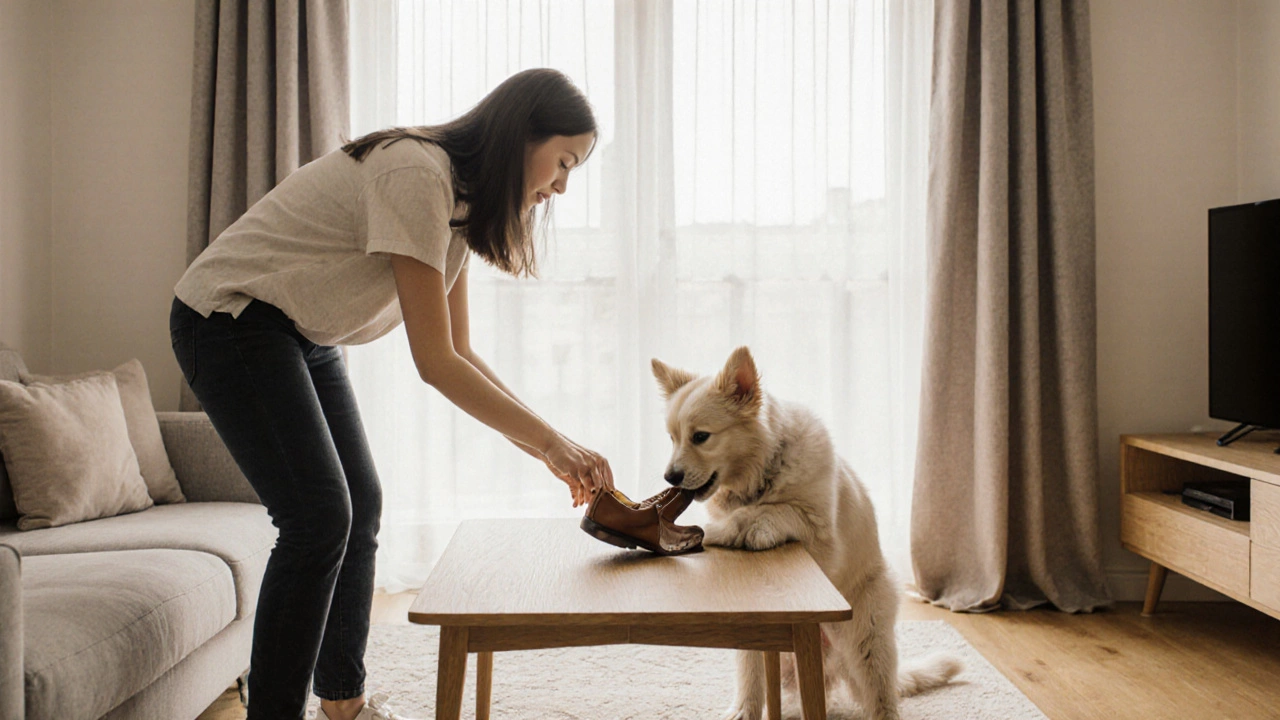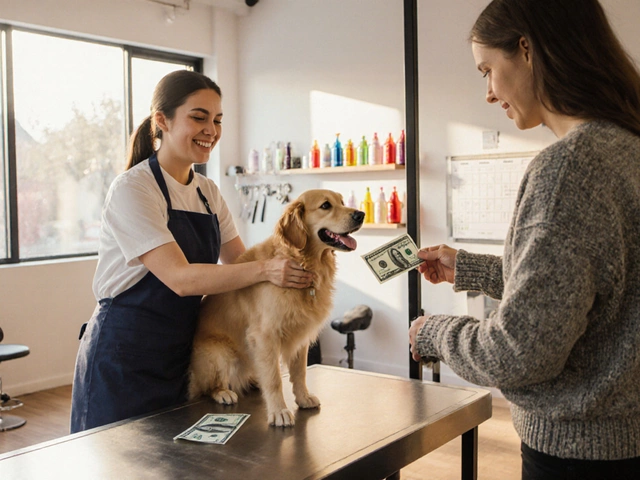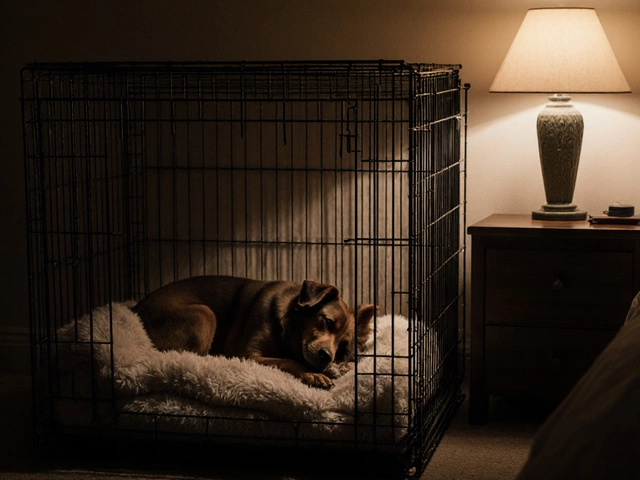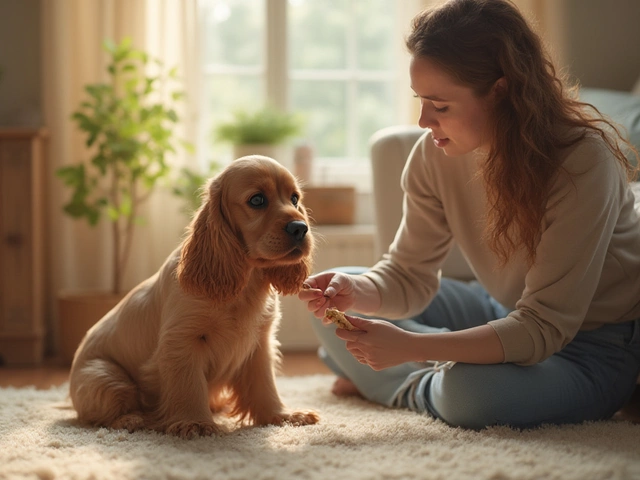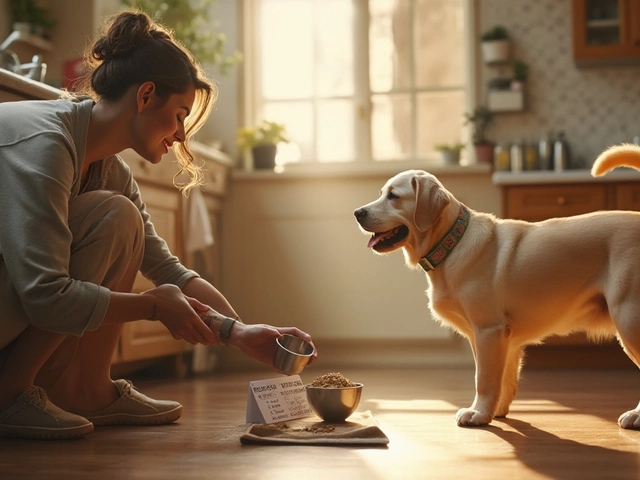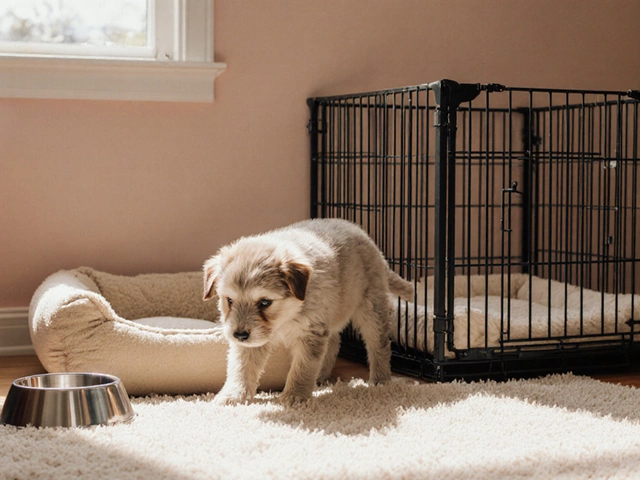Puppy "No" Training Simulator
Training Results Will Appear Here
Select a scenario and response, then click "Simulate Training Session"
Key Training Principles
1. Pick a Clear Cue Word
Use a firm, consistent word like "no" or "stop".
2. Catch the Behavior
Time your cue to match the beginning of the unwanted action.
3. Give the Cue
Say "no" clearly and block the action gently with your hand.
4. Redirect and Reward
Show your puppy what is acceptable and reward immediately.
Common Mistakes to Avoid
Yelling or Shouting
This scares the puppy and makes the cue feel like punishment.
Inconsistent Use
Using different words or tones confuses the puppy.
Rewarding Wrong Behavior
Reinforce the habit instead of stopping it by rewarding during the bad action.
Real-World Example
Emma and Buddy
Emma taught Buddy to stop chewing slippers by saying "no," blocking the action, and offering a chew toy. After three weeks of consistent practice, Buddy chose his toy over the slippers.
When you bring home a Puppy is a young dog that is learning basic boundaries and social cues, teaching it “no” becomes one of the first dog training tasks.
Why “No” Matters
Kids quickly learn that certain actions get them into trouble, and puppies are no different. A clear “no” tells the puppy which behaviors are off‑limits, preventing habits that can become hard to break later (like chewing furniture or jumping on guests). Setting that boundary early also makes other commands easier to teach because the dog learns to pause and look to you for direction.
Core Principles for Teaching “No”
- Positive Reinforcement - rewarding the right behavior right after the “no” is given.
- Consistency - using the same word, tone, and timing every time.
- Body Language - keeping a calm posture so the puppy knows you’re in control.
- Tone of Voice - a firm but not angry sound distinguishes a command from a scold.
Skipping any of these pieces usually leads to confusion, and the puppy may start ignoring you altogether.
Step‑by‑Step Method to Teach “No”
- Pick a cue word. Most owners use “no,” but a short, distinct word like “stop” works too. Say it in a low, firm tone.
- Catch the behavior. Wait until the puppy starts the unwanted action (e.g., chewing a shoe). Timing matters: the cue must come the moment the action begins.
- Give the cue. Immediately say “no” while gently blocking the action with your hand. Avoid hitting; the goal is to interrupt, not punish.
- Redirect. Offer an appropriate alternative (a chew toy, a “sit” command, etc.). This shows the puppy what *is* allowed.
- Reward the alternative. Use a tasty treat or enthusiastic praise. This reward links the “no” cue to a positive outcome.
- Repeat. Practice in short 5‑minute sessions throughout the day. Consistency builds a mental association.
- Fade the treat. Once the puppy reliably stops the bad behavior, reduce treats gradually and rely on verbal praise.
Following these steps for a few weeks usually yields a noticeable drop in the targeted misbehavior.
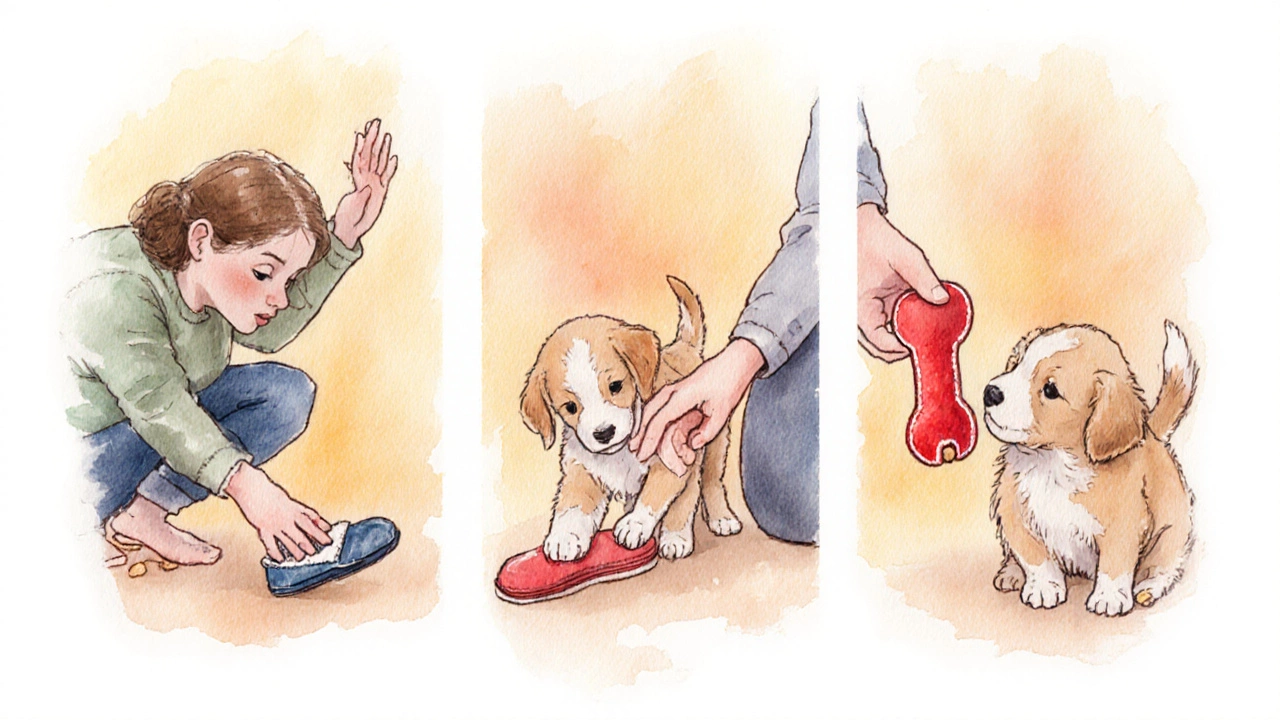
Common Mistakes and How to Fix Them
- Yelling or shouting. Raising your voice can scare the puppy and make the cue feel like a punishment. Switch to a calm, firm tone.
- Using the cue inconsistently. If you sometimes say “no” for a chew and other times ignore it, the puppy won’t learn the pattern. Write the cue on a sticky note and keep it visible during training.
- Rewarding the wrong behavior. Giving a treat while the puppy is still chewing the shoe reinforces the habit. Wait until the puppy drops the item or looks at you before rewarding.
- Skipping the redirection. Simply saying “no” and walking away leaves the puppy confused about what to do instead. Offer a toy or a simple command right after the cue.
- Involving multiple family members with different cues. Choose one word and one tone for the entire household. Train all members together for the first week.
Quick Reference Checklist
- Choose a single cue word (e.g., “no”).
- Use a firm, calm tone.
- Deliver the cue the moment the unwanted action starts.
- Block the action gently with your hand.
- Redirect to an acceptable alternative.
- Reward the alternative immediately.
- Practice 2‑3 short sessions daily.
- Phase out treats once consistency is solid.
Training Approach Comparison
| Approach | Goal | Typical Result | Pros | Cons |
|---|---|---|---|---|
| Positive Reinforcement | Teach the right behavior | Higher obedience, stronger bond | Builds trust, low stress | Requires consistent rewarding |
| Punishment | Discourage the wrong behavior | Short‑term compliance, possible fear | Immediate effect if applied correctly | Risk of anxiety, may damage relationship |
| Ignore (NegativeFree‑Running) | Remove attention as reward | Behavior fades if attention was the driver | Simple, no treats needed | Doesn’t teach alternative behavior |
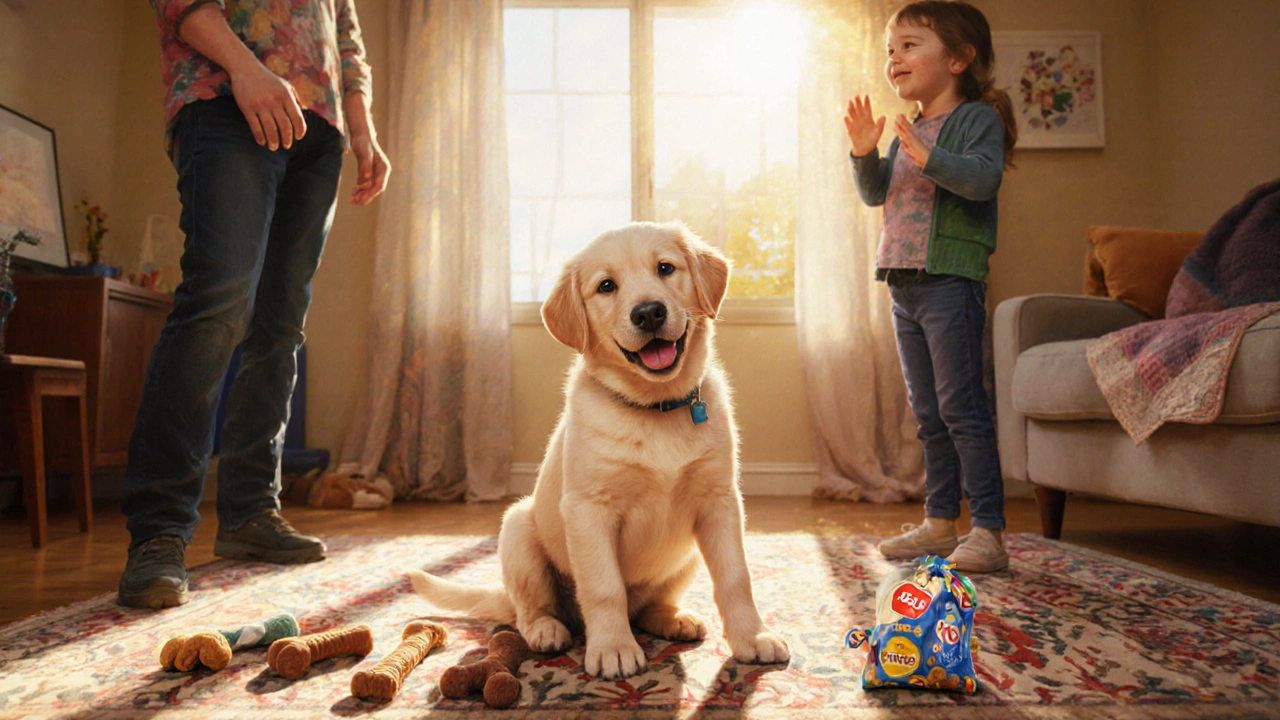
Putting It All Together: A Real‑World Example
Emma adopted a 10‑week‑old Labrador Retriever puppy named Buddy. Within days Buddy started chewing on Emma’s slippers. Emma followed the step‑by‑step method:
- She said “no” in a firm tone the instant Buddy grabbed a slipper.
- She blocked the slip with her hand and handed him a rope chew toy.
- Buddy took the toy, dropped the slipper, and Emma gave him a tiny piece of chicken as a reward.
- After three weeks of two short daily sessions, Buddy stopped targeting the slippers entirely, choosing his chew toy instead.
Next Steps for Different Scenarios
- If your puppy still ignores “no.” Try a brief clicker training session to associate the cue with a distinct sound, then reward.
- Multiple problem behaviors. Use a separate cue for each (e.g., “off” for jumping, “leave” for grabbing). Keep each training session under five minutes to avoid overload.
- Living in an apartment. Practice the “no” cue on a leash in the hallway first, then gradually add distractions like other dogs.
- Training with kids. Teach children the same cue word and tone. Supervise them to ensure they don’t accidentally reward the wrong action.
Frequently Asked Questions
How long does it take for a puppy to learn “no”?
Most puppies start responding after 1‑2 weeks of short, daily practice, but solid reliability can take a month or more, depending on consistency and the puppy’s age.
Can I use a clicker instead of saying “no”?
Yes. A clicker gives a clear, neutral sound that marks the exact moment you want to interrupt. Pair the click with the verbal “no,” then reward the alternative behavior.
Is it okay to physically push the puppy away?
Gentle blocking is fine, but never shove or hit. The goal is to create a brief pause, not to scare the puppy.
What if my puppy keeps doing the bad habit after I say “no”?
Step back and check timing. The cue must be given before the behavior finishes. Also make sure the alternative you’re offering is more appealing than the unwanted action.
Should I ever use treats when teaching “no”?
Treats are used to reward the *correct* behavior that follows the “no.” They are not given for the bad action itself. Over time, you can replace treats with verbal praise.
